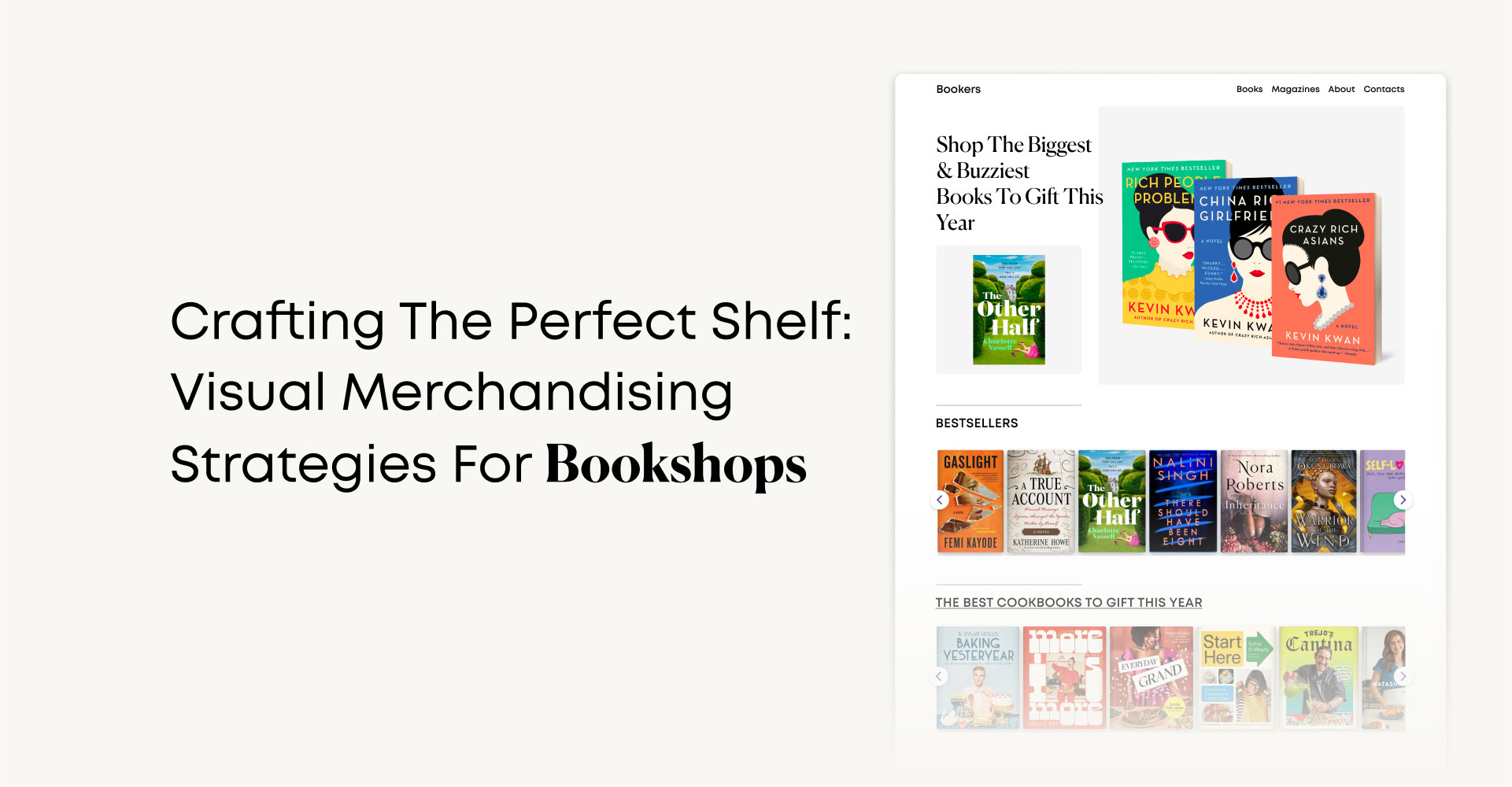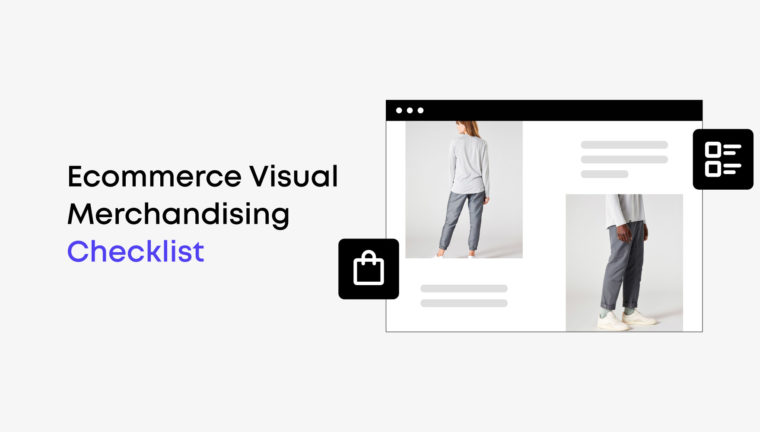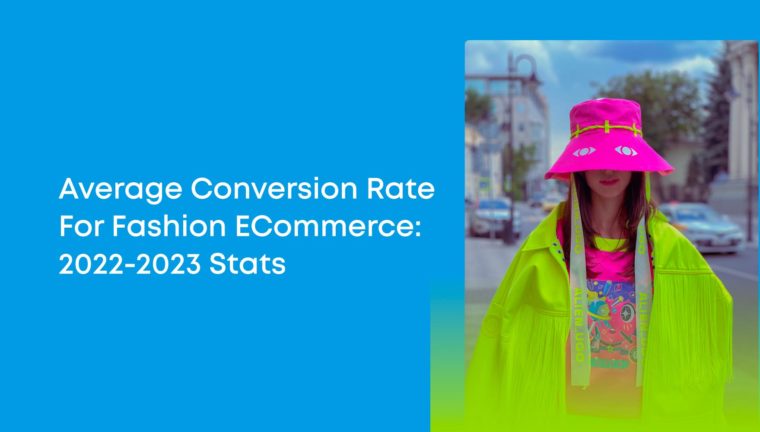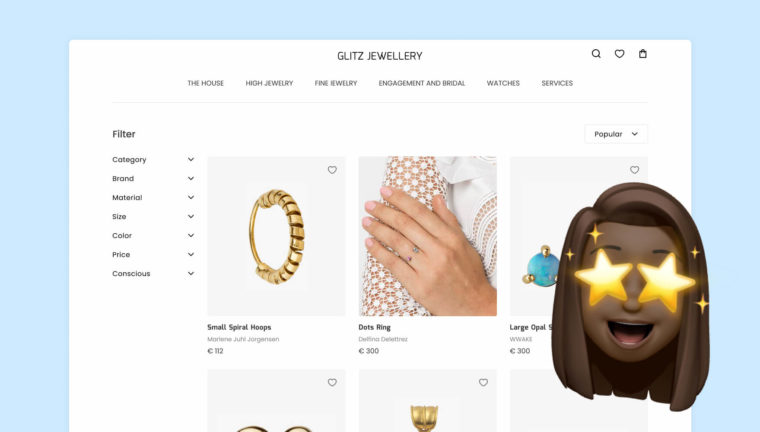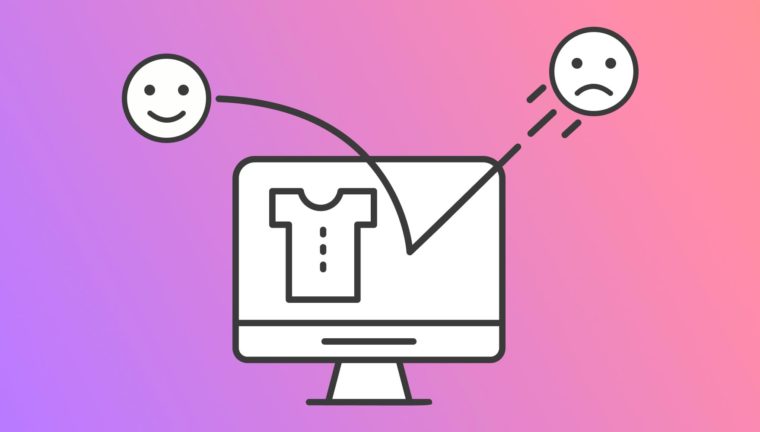If you haven’t thought about digital transformation for bookstores yet, now is the time. And it’s best to start with visual merchandising techniques because that’s the easiest and surest way of boosting online sales.
The relationship between visual merchandising and sales growth may seem unobvious, but it does exist. However, one cannot cover such a complicated topic in a few words, which is why we’ve prepared a whole article to go through all the crucial details.
In this new blog piece, we share our experience and reveal the secrets of visual merchandising for online libraries, bookshops, and printing and stationery retailers. And keep in mind, it’s not enough to just read these tips; if you want to ensure your online retail success, you have to put them into practice too.
What is Visual Merchandising?
Visual merchandising is a real science that uses tools and technologies for effective product display. The goal is to arrange the assortment in such a way as to push the customer to make a purchase, which is vital for both online and offline areas.
Visual merchandising is based on knowledge of human psychology, advertising, marketing, and even design. And we have to discuss all three aspects in order.
First, we’ll deal with the psychology of customers and its role in increasing conversion rates, and then we’ll move on to UI/UX design, online advertising, and digital marketing for bookshops.
The Psychology of Online Shoppers
Research shows that users form an initial opinion of a website within seconds, and visual appeal is a critical factor in this process. To achieve maximum effect and encourage customers to explore the online store, followed by making a purchase, we advise you to pay attention to a few important points.
Cognitive biases & purchase decisions
First of all, when working on visual merchandising for libraries, you should analyze the basic cognitive biases, as they greatly influence customers’ purchase decisions.
Cognitive biases are mental shortcuts that people rely on when making choices, including those related to shopping. For example, you can exploit scarcity bias by highlighting limited edition books or running time-limited promotions, thereby creating a sense of urgency and encouraging customers to buy. Similarly, why not employ the anchoring bias by displaying a higher-priced book first, making others seem comparatively more affordable?
Emotions & visual merchandising techniques
Emotions play a significant role in driving customer behavior, too, and visual merchandising can be used to trigger specific reactions in online shoppers.
For instance, using warm and inviting colors like orange and yellow might evoke feelings of happiness and joy, making users more willing to engage with your bookstore. Additionally, incorporating visually appealing elements that align with the genre of books you offer will create a sense of relevance and resonate with your target audience.
Creating Eye-Catching Design
Visual merchandising strategies for bookshops are closely related to UI/UX design, which affects conversion rates and leads to sales growth. The thing is, the visual appeal of your virtual store can make all the difference in attracting and retaining customers, as it helps capture visitors’ attention and encourage them to explore further.
Efficient UI/UX design means the following:
- A well-designed UI/UX should be eye-pleasing, intuitive, and easy to navigate. It has to reflect your brand’s identity and create a seamless shopping experience for customers.
- Make sure to display clear, high-resolution images that showcase the books in the best possible light. An effective technique is to enable customers to zoom in on book covers to examine details closely.
- Another way to ensure successful digital transformation for bookstores and enhance the overall customer experience is to incorporate interactive elements, such as:
- Book previews. The feature helps customers browse through a few pages or chapters of a book before making a purchase.
- Virtual bookshelves. This way, you create a personalized user experience and allow customers to curate their own collections of books.
- Interactive quizzes. Interactive quizzes or recommendation tools can help customers discover new books tailored to their interests. All you have to do is ask users a series of questions or analyze their onine behavior.
- Ensure your catalog and product pages are well-organized and have visually striking call-to-action buttons, guiding customers towards adding the book to their cart or wishlist.
These simple but powerful design techniques are a good foundation for online retail success and an integral part of visual merchandising for libraries, bookshops, and other similar online resources.
Innovative Navigation & Browsing Techniques
If you’re looking for a simple and affordable way of Increasing conversion rates and boosting online sales, consider improving your navigation and browsing system. We recommend implementing the following techniques to get started:
- Intuitive search and filtering options. Imagine a search bar that predicts book titles as customers type or a filtering system that allows users to narrow down their choices based on genre, author, or even publication year. With these innovative features, finding their next literary adventure will be effortless for your customers.
- Personalized recommendations based on browsing history. Creating a personalized touch is key to customer loyalty and another step to efficient digital transformation for bookstores. For example, greet your customers with a selection of books that align with their previously viewed titles or interests.
- Visual cues to guide customers through the online store. Use vibrant banners, eye-catching graphics, or even animated illustrations to captivate your customers’ attention and direct them towards specific sections or promotions.
- Virtual bookshelf displays. One of the joys of visiting a physical bookstore is perusing the shelves, running fingers along the spines, and stumbling upon hidden gems. Why not recreate this experience online? By mimicking the charm of a brick-and-mortar store, you create an immersive experience that will undoubtedly delight your customers and keep them coming back for more.
- Efficient digital catalog management. The basis of any online store, not just those selling books, is a product catalog, which is why it should be well-structured and provide users with a seamless shopping experience. Moreover, catalog improvement is essential to all visual merchandising strategies for bookshops, so we pay special attention to this topic in a separate section.
Creative Cross-Selling & Upselling Strategies
Here are four creative cross-selling and upselling techniques you can implement to take your online store to the next level:
- Personalized book recommendations. By analyzing customer data and understanding their preferences, you can recommend relevant books that they may be interested in. For example, if a user is browsing a crime novel, you can suggest similar titles or authors in the same genre.
- Leveraging scarcity and exclusivity to drive sales. We, humans, have an innate desire for things that are limited or exclusive. So, if you offer a limited edition box set of a popular series, complete with exclusive artwork and bonus content, you’ll create a buzz among passionate readers, ensuring bookshop sales improvement.
- Bundling options and special promotions. Who doesn’t love a good deal? Your customers are no exception, so why not provide them with something special? Let’s say, offer them a “buy 2, get 1 free” deal on a selected range of books, or bundle a popular book with a lesser-known gem from the same author.
- Themed collections and curated book sets. You can create a collection of “Books for Adventure Lovers” or “Books to Inspire Creativity.”, encouraging customers to explore more titles within the set.
By the way, various digital tools can automate your cross-selling and upselling processes. For example, Sortler deals perfectly with this task, approaching it through smart catalog management and helping to increase online sales for eCommerce stores. It’s a great solution for any online store, including those selling books, printing, and stationery. We’ll tell you more about Sortler and its great features later in the article.
Digital Marketing Strategies For Bookshops
Digital marketing and visual merchandising strategies for bookshops are partly interconnected, too, since competent promotion attracts customers to the online store, after which it’s up to you to present your product range to them in the most spectacular manner.
So, giving you some digital marketing tips would be the right move:
- Utilizing multimedia content, such as book trailers or author interviews. These visually appealing and interactive elements capture the attention of potential readers, giving them a glimpse into the world of the books on offer.
- Incorporating customer reviews and ratings to build trust. The bookstore can establish credibility and help potential customers make informed decisions by showcasing genuine feedback from previous buyers. Moreover, positive reviews and high ratings act as endorsements, increasing the likelihood of a purchase.
- Encouraging social sharing and user-generated content. Add easy-to-use sharing buttons and promoting hashtags to your website so customers can share their favorite books or discuss their reading experiences on social media platforms. This way, you expand the store’s reach and foster a sense of community among readers.
Using digital marketing for bookshops, you’ll attract more customers to your online catalog, which is only half the battle. The question remains whether they will be interested enough in your product display to make a purchase. That sounds like a topic for a separate discussion, right?
Digital Catalog Management in Visual Merchandising
Suppose you could lure customers to your online store, but how do you retain them here? After all, you’re not the only one who sell books, printing, or stationery, you have intense competition.
To survive and thrive in this environment, you need to make your catalog irresistible to shoppers, which means:
- Accurate and up-to-date product information. There’s nothing worse than outdated or incomplete product information. That’s one of the most annoying factors that can lead to a turnout of shoppers. Do your best to avoid such a mistake.
- Logical product categorization. A successful online shopping journey begins with a smooth browsing experience, meaning the ease of finding the desired product. And to provide that experience to customers, you need to categorize and label your range. For example, if you sell books, organize them by genre, author, or special collection. If you’re working with printing and stationery, group items by brand or product type, be it paper, staplers, or pens.
- Efficient inventory management. Believe it or not, you’ll achieve significant bookshop sales improvement simply by starting to manage your inventory correctly. First and foremost, this means your catalog reflects real-time availability, avoiding customer disappointment due to out-of-stock items.
- Product recommendations. Remember we talked about cross-selling and upselling strategies? It’s time to put them into practical use. Enhance your online catalog and make it promote your goods by offering similar items, creating matching product groups, etc.
Bookshop Sales Improvement with Catalog Management Tools
Turning a catalog into a sales tool is a task that takes a lot of time, effort, and other resources. We recommend streamlining it with the help of Sortler, a solution for intuitive catalog management.
Sortler will be a great addition to the visual merchandising strategy for libraries and online stores selling books, printing, or stationery. All you need to do is sign up for a monthly or annual subscription, choosing the appropriate option from the three available.
Sortler will help automate many catalog management processes, including these:
- Showing the diversity of your product range. You can specify what percentage of products of different brands, types, and, in the case of books, genres are to be placed on the catalog page in the customer’s sight. Show your audience everything you have! Don’t give shoppers the impression that you only sell one genre of books or one brand of stationery.
- Smart inventory management. Create your own product placement rules depending on their stock levels. For instance, automatically move unavailable items down the page and highlight those running out if you want to sell them faster.
- More cross-selling and upselling opportunities. Let Sortler group matching items side by side on the catalog page, creating beautiful product combinations. Who knows, maybe customers will buy several items instead of just one!
- Improving conversions of poorly selling products. Another way to achieve bookshop sales improvement is by taking care of your underperforming items. Sortler will make them more visible on the page, drawing customers’ attention. If the trick fails to work, it’ll add a certain discount to these low-selling products, be it books, printing, or stationary.
Sortler’s benefits:
- Cloud access. Sortler is a cloud-based system available anywhere and anytime.
- Timely data synchronization. Sortler, at its core, is a virtual catalog that you can synchronize with a real one when you are 100% sure of the changes made.
- Multiple usage options. You can work with Sortler in one of 3 ways:
- Smart rules. You create specific catalog management rules that Sortler strictly obeys without your participation, which means total task automation.
- Drag & Drop. You can also visualize the process of working with the catalog and move its elements with the mouse across the screen.
- Scores. Finally, the third option for working with Sortler is to assign certain scores to items. The higher a product’s rating, the higher it will appear on the page.
These and other Sortler’s features make it an excellent digital transformation tool for bookstores and similar projects selling goods online. If you need more information on the subject, look at how we used Sortler to help our client prosper in the highly competitive eCommerce market.
Conclusion
We discussed relevant visual merchandising strategies for bookshops and online stores selling stationery and printing goods. And it’s up to you to decide whether to use them or not and to what extent. Let’s just say that our tips are a great way to stimulate conversion growth.
If you have any questions, feel free to ask us. And be sure to follow our blog as we share a lot of valuable insights for e-commerce businesses.
